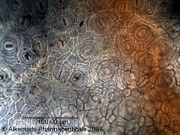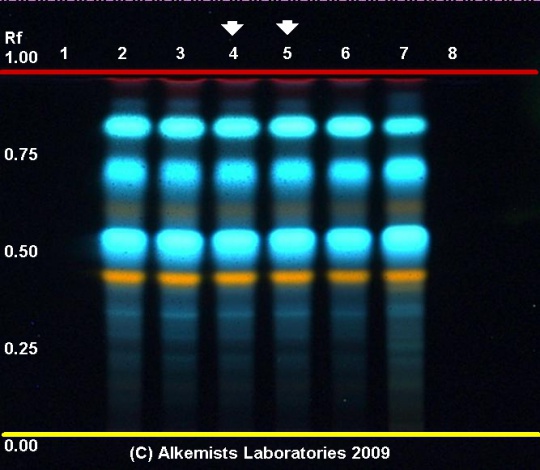Ilex paraguariensis (leaf)
(Nomenclature updated) |
|||
| Line 1: | Line 1: | ||
| − | = | + | =Nomenclature= |
| + | |||
| + | {{nomenclature | binomial=Ilex paraguariensis | ||
| + | |authority=A. St.-Hil. | ||
| + | |family=Aquifoliaceae | ||
| + | |scn=mate | ||
| + | |syn= | ||
| + | |ayurvedic= | ||
| + | |pinyin= | ||
| + | |aka=Paraguay tea; yerba mate | ||
| + | |notes= Ed. Note: The use of the accepted binomial nomenclature is generally considered to be a permissible option to the Standard Common Name in identifying botanical ingredients. In the case of the caffeine-containing Ilex paraguariensis however, it is recommended that the name "mate" be used on labeling of consumer products to avoid potential confusion. }} | ||
| + | |||
=Macroscopic Entries= | =Macroscopic Entries= | ||
=Microscopic Entries= | =Microscopic Entries= | ||
Revision as of 17:29, 14 March 2014
Contents |
Nomenclature
Ilex paraguariensis A. St.-Hil. Aquifoliaceae
Standardized common name (English): mate
Macroscopic Entries
Microscopic Entries
|
HPTLC Entries
|
Yerba Mate (leaf) (Ilex paraguariensis) Lane Assignments Lanes, from left to right (Track, Volume, Sample):
Reference materials used here have been authenticated by macroscopic, microscopic &/or TLC studies according to the reference source cited below held at Alkemists Laboratories, Costa Mesa, CA. Stationary Phase Silica gel 60, F254, 10 x 10 cm HPTLC plates Mobile Phase ethyl acetate: glacial acetic acid: formic acid: water [10/1.1/1.1/2.4] Sample Preparation Method 0.3 g + 3 ml CH3OH sonicate/heat @ 50° C ~ 1/2 hr Detection Method Natural Product Reagent + PEG -> UV 365 nm Reference see Herbal Drugs and Phytopharmaceuticals, Max Wichtl, 3rd ed., 2004
|
Other Points of Interest
Cite error: <ref> tags exist, but no <references/> tag was found


